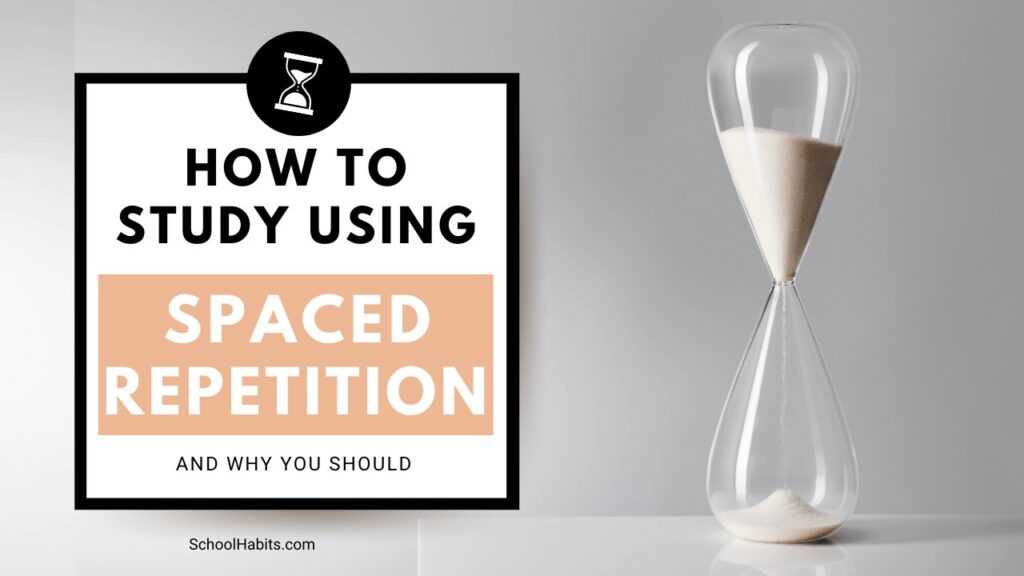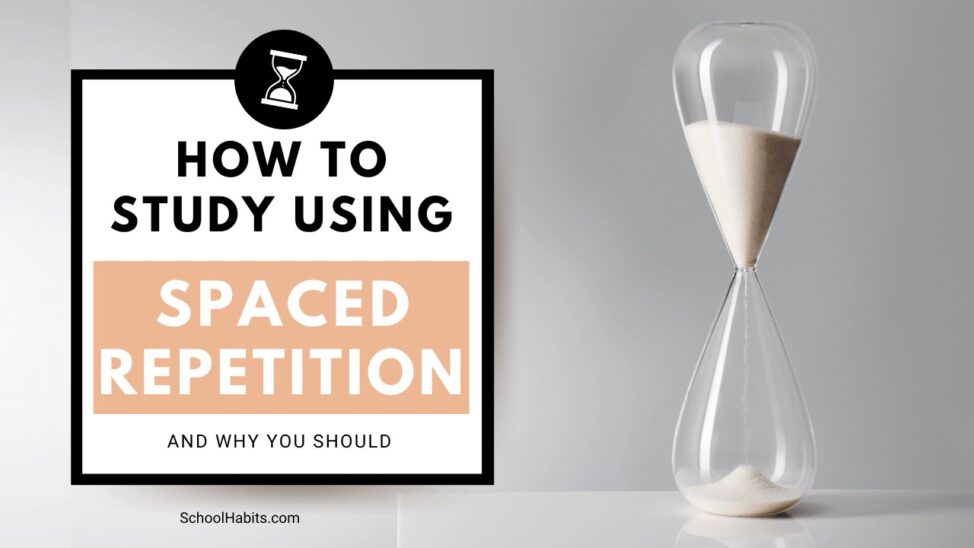By Katie Azevedo, M.Ed.

Spaced repetition is a study method that involves reviewing material repeatedly over various intervals of time. It is easily one of the best study methods known, especially when used in combination with active recall.
Most students study using the opposite principles of spaced repetition. In other words, it’s more common for students to study for long periods of time, either for several hours or even overnight. (Don’t pull all-nighters. But if you have to, here’s how.) However, according to abundant research – including this article by Sean H. K. Kang in the journal Policy Insights from the Behavioral and Brain Sciences – “having the initial study and subsequent review or practice be spaced out over time generally leads to superior learning than having the repetition(s) occur in close temporal succession (with total study time kept equal in both cases).” Stated another way, it’s been proven that multiple spaced-out study sessions are better than fewer study sessions grouped together.
What does this mean for you? It means that you should prepare for your next test using spaced repetition, which likely means starting your study sessions earlier than you’re used to.
How and why does spaced repetition work?
Using spaced repetition to study new material increases your ability to access (recall / remember) the information you’re studying. It works because spreading out your study sessions over various time intervals gives your brain juuuust enough time to “nearly forget” the material before you review it again at the next time interval (days or weeks later, depending). The process of recalling material just before it fades from memory builds stronger neural networks. This is learning.
How to study using spaced repetition
The process for using spaced repetition is fairly simple. Generally speaking, you have one primary study session, and then several review sessions spaced out over a period of several days or weeks, depending on the complexity of the material you’re learning and how much advance notice you have before the test. Most high school and college students preparing for a basic test will need one to two weeks before an exam in order to properly use spaced repetition. If you have less than a week’s notice, use this study plan instead.
Studies conflict over what is the “right” interval of time between study sessions. (Some studies report an optimal schedule of 1 day, 7 days, 16 days, and 35 days, while this study reports that the “optimal gap becomes larger as test delay gets larger.”) What is known, however, is that slowly increasing the time between sessions has cognitive advantages. Below, I’ve outlined two general study schedules, both of which use spaced repetition. (Also, here’s how long I recommend high school students study each day.)
Study Schedule #1
Scenario: Test is 1 week away
- Day 1: 45-60 minute study session
- Day 2: 30-45 minute study session
- Day 4: 30-45 minute study session
- Day 7: Test Day. Brief 15-minute review before the test
Study Schedule #2
Scenario: Test is 2 weeks away
- Day 1: 45-60 minute study session
- Day 2: 30-45 minute study session
- Day 4: 30-45 minute study session
- Day 7: 30-minute study session
- Day 11: 30-minute study session
- Day 14: Test Day. Brief 15-minute review before the test
The bottom line is that we have only really learned something if we are able to recall it when we need it. Recalling information on-demand requires that we have direct neural pathways to that information stored in our long-term memory. The best way to build and strengthen those neural networks is to put ourselves in a position of nearly forgetting something and then reviewing it just in time. Studying with spaced repetition does exactly this.

